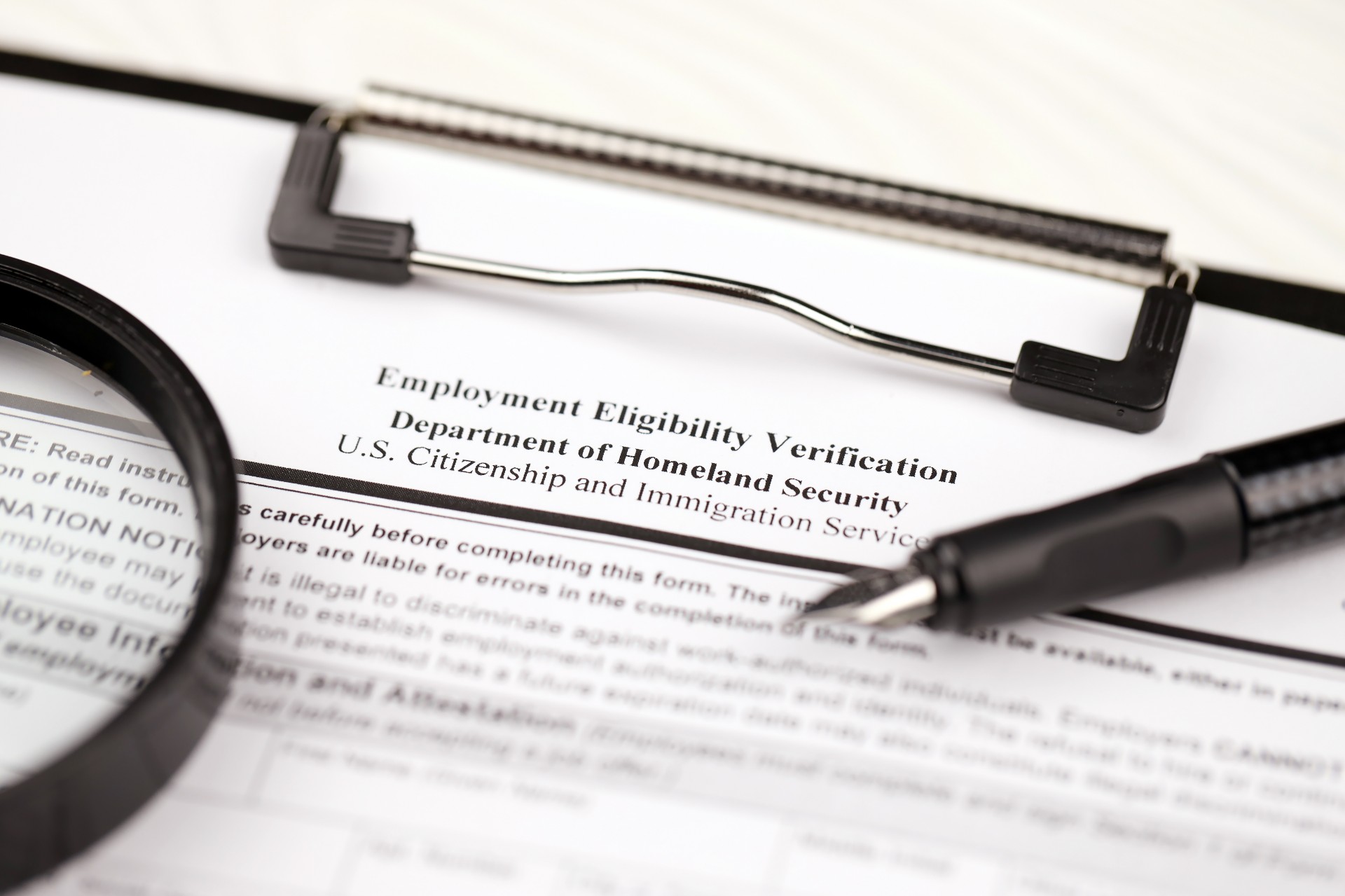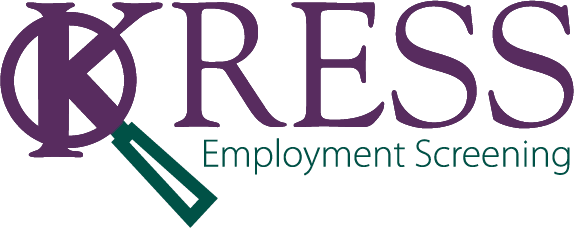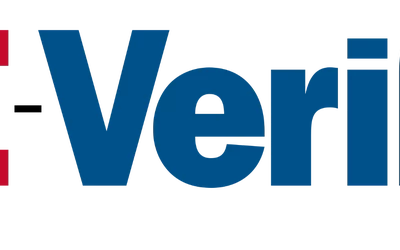The $8M Wake-Up Call
In April 2025, U.S. Immigration and Customs Enforcement (ICE) fined three Colorado companies more than $8 million for hiring workers who were not authorized to work in the United States. This is one of the biggest I-9 enforcement actions in recent years, and it sends a clear message to all employers: ICE is watching.
The companies fined were:
- CCS Denver, Inc.: $6.1 million fine after ICE found that 100 percent of its I-9s were incorrect. Investigators confirmed at least 87 unauthorized workers.
- PBC Commercial Cleaning Systems: $1.6 million fine, with a 74 percent violation rate. Twelve of their workers were unauthorized.
- Green Management: $270,000 fine. Their I-9 violation rate was also 100 percent, and 44 of their employees lacked work authorization.
In total, these three companies were found to have hired 143 workers who were not eligible to work in the U.S. ICE called this a “clear violation of federal law.”
“These fines could have been prevented,” says Constance Brackett, Chief of Staff at KRESS Inc. “Businesses need to understand that ignoring I-9 rules puts everything at risk. It’s not just paperwork. It’s compliance with federal law.”
ICE’s Homeland Security Investigations (HSI) unit leads these audits. They look at every I-9 on file. If the forms are incomplete or wrong, the employer is responsible, even if it was an honest mistake.
Violations fall into several categories, each with its own penalty range:
| Violation Type | Penalty Range (Per Offense) |
|---|---|
| Paperwork Errors | $288 to $2,861 |
| Knowingly Hiring Unauthorized Workers | $716 to $28,619 |
| Document Fraud | $590 to $11,823 |
| E-Verify Noncompliance | $973 to $1,942 |
These penalties are steep and scale fast. One form error multiplied across a workforce can turn into six-figure fines. For many businesses, that’s the difference between growth and shutdown.

Why ICE Is Cracking Down on Employers
ICE isn’t just going after big companies. It’s targeting businesses of all sizes and in every industry. The goal is simple: to stop employers from hiring people who are not authorized to work in the U.S.
ICE uses a three-part strategy through its Homeland Security Investigations (HSI) division:
Strategy | What It Means for Employers |
|---|---|
Compliance | ICE audits Form I-9 files. Incomplete or incorrect forms can lead to civil fines. |
Enforcement | ICE may pursue criminal charges and arrest unauthorized workers. |
Outreach | Programs like IMAGE offer education and support to help employers avoid violations. |
The agency has said that hiring unauthorized workers “undermines the integrity of our immigration system and puts law-abiding employers at a disadvantage.” You can read the full statement here.
“The rules aren’t new. What’s changed is the pressure,” says Constance. “We’re seeing more audits, bigger fines, and tougher enforcement. Employers who wait until after an audit to take this seriously are usually too late.”
Several factors affect how much a company may be fined:
- Size of the business
- Whether the employer made a good-faith effort to comply
- If the violations were intentional
- The seriousness of the violations, such as hiring many unauthorized workers or failing to correct known issues
According to Greenberg Traurig, fines have gone up again in 2025. Some penalties now range from hundreds to over $2,800 per form for paperwork mistakes alone. Intentional violations involving unauthorized workers can cost over $28,000 per offense.
ICE isn’t giving out warnings. It’s issuing fines. And when the violations are serious or repeated, criminal charges can follow.

The Top I-9 Mistakes That Cost Businesses
Most I-9 problems aren’t intentional. But that doesn’t matter to ICE. If your forms are wrong, you can still be fined. In some cases, businesses have been penalized for every single I-9 on file, even when they thought they were in good shape.
Here are the five mistakes that get companies into trouble most often:
- Missing or incomplete forms
Every employee must have a Form I-9. If even one is missing, that’s a violation. If any section is blank, like forgetting to sign or date it, it can lead to fines of up to $2,861 per form. - Using the wrong documents
Some employers accept documents that aren’t allowed under the I-9 rules. Others fail to check that the documents match what’s listed on the form. These errors are considered paperwork violations. - Failing to reverify work authorization
When an employee’s work authorization expires, the employer must reverify. If this doesn’t happen on time, the business is responsible. Reverification failures tied to unauthorized workers can result in fines starting at $716 per worker and rising sharply for repeat offenses. - Incorrect retention or storage
I-9s must be kept for a specific time: three years after hire or one year after the employee leaves, whichever is later. Misplacing or discarding forms too early is a common mistake and can result in per-form penalties. - No audit trail or self-review
Many businesses never audit their own I-9s. That means they don’t catch problems until ICE shows up. A good internal audit can find and fix issues before they turn into penalties.
And here’s one that often gets overlooked:
Even if you completed the I-9, you may not have taken the next step: verifying it through E-Verify. That extra step confirms that the employee’s information matches federal records. Without it, you miss a key chance to catch problems early and protect your business.
“We often find the same problems again and again,” says Constance. “Small errors become big fines when they add up across dozens or hundreds of forms.”
Fines for substantive violations now range from about $288 to over $2,861 per form, according to the updated ICE penalty matrix. Knowingly hiring unauthorized workers carries even higher penalties, up to $28,619 per person in some cases.
E-Verify: The Tool Every Employer Should Understand
E-Verify is a federal system that helps employers confirm if new hires are allowed to work in the United States. It compares information from an employee’s Form I-9 to records from the Social Security Administration and the Department of Homeland Security. If the records match, the employee is confirmed as work authorized.
In many states, using E-Verify is a mandatory requirement for all employers, and in others it's expected for public sector employees, state agencies and contractors. For federal contractors, using E-Verify is required in ALL states. Even if it's not mandatory in your state, E-Verify helps you to achieve true compliance.
The system is free to use. But it’s not foolproof. If it’s used the wrong way, it can cause problems. If employers don’t know how to handle things like a mismatch or a delay, they may make a mistake that leads to a violation.
KRESS is one of only three companies that helped test the original version of E-Verify back in the 1990s, when it was called the Basic Pilot Program. Since then, we’ve worked with thousands of companies to roll out E-Verify the right way.
We help with:
- Registration and setup
- Training for HR teams
- Handling Tentative Nonconfirmations (TNCs)
- System integration and compliance support
In 2024, the federal government rolled out E-Verify+ and E-Verify NextGen, major updates that changed how employment verification works. These updates allow for employee-controlled data entry, portable verification status, and remote document review, making the process more efficient but also adding new responsibilities for employers.

Using E-Verify does not replace the need to fill out Form I-9. It also doesn’t protect you from fines if you’re using it incorrectly. That’s why it’s critical to pair E-Verify with strong I-9 procedures and clear policies.
You can learn more about how E-Verify works at E-Verify.gov.
Post-Audit Survival: What Employers Must Do Next
If you’ve been through an ICE audit, you already know it’s stressful. But what happens next is just as important as what happened during the inspection. Mistakes made after an audit can lead to more penalties.
Here’s what employers need to do:
Action | Why It Matters |
|---|---|
Review every I-9 again | Find any errors the audit may have missed. Double-check signatures, dates, and documents. |
Fix what you can | You’re allowed to correct many issues, but they must be done properly and documented clearly. |
Keep everything | Keep copies of audit notices, correction records, and all correspondence with ICE. This is your paper trail. |
Reverify when needed | If an employee’s work authorization has expired, you must reverify or take appropriate action. |
Use E-Verify | As well as being mandatory for some employers, E-Verify adds an extra layer of protection, helping to prevent future compliance issues. |
Build a better system | Use what the audit revealed to prevent future problems. Train your team and put stronger checks in place. |
If you don’t correct the issues, ICE can (and often does) come back for follow-up audits. Failing to act could lead to higher penalties or even additional violations.
This is where KRESS steps in.
We help you get ahead of potential issues by proactively reviewing your existing I-9s and running them through E-Verify on your behalf. This gives you a clear picture of your current workforce compliance and the opportunity to correct errors before an audit ever lands on your doorstep.
Our post-audit and compliance services include:
- E-Verify Processing: We can run your entire I-9 file through E-Verify to catch problems early.
- Remediation Support: If issues are found, we guide you through proper correction and documentation.
“Post-audit work isn’t just cleanup, it’s about building a stronger system so the same mistakes aren’t repeated.”
Even if you haven’t been audited yet, this is the time to act. The next inspection may not come with a warning.

Don’t Wait for a Fine to Fix Your I-9 Process
The recent $8 million in ICE fines is not just a headline. It’s a warning. I-9 compliance is not just a legal requirement. It’s a critical way to protect your business.
ICE is conducting more audits. Fines are rising. And simple mistakes, like a missing signature or expired document, can turn into thousands in penalties. For small businesses, that can threaten everything you’ve worked for.
Maybe you’ve filled out your I-9s. But did you verify them? Did you check them again? Did you train your team? If not, it’s not too late. KRESS can help.
We’ve helped companies of all sizes run E-Verify, clean up their I-9 files, fix old mistakes, and build systems that hold up under audit. We know how hard small business owners work. We’re here to make sure paperwork doesn’t get in the way of your success.
What next?
- Download our free checklist: What To Do After an I-9 Audit
- Contact KRESS today to schedule a compliance review
What you don’t know can cost you. Let’s fix it together.









